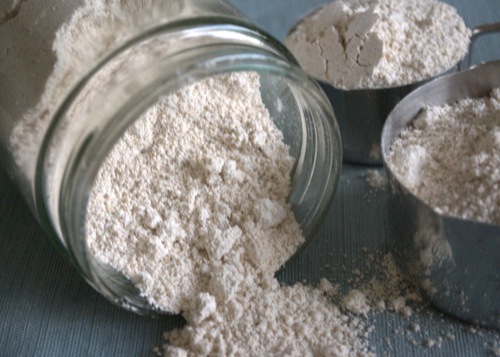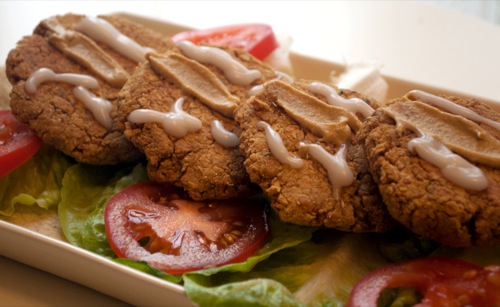This morning I posted about several different types of flour, and this afternoon I want to talk about a few of the gluten-free flours.
When making a substitution for flour in a recipe, it is best to use a blend or mixture of of gluten-free flours. Although I have luck substituting gluten-free oat flour directly for wheat flour without a problem. I have a fool proof GF recipe in my latest cookbook, and commercial blends are sold online or at most health stores.

Oat Flour
Oats are naturally gluten free, but may become cross-contaminated with gluten. Make sure you purchase oats or oat flour that is certified gluten-free if you have a sensitivity or allergy. Oat flour is very light and has a slightly nutty flavor. Rather than buy oat flour, I make my own at home in a blender. (How to Make Oat Flour)
Millet Flour
This flour is very popular in Africa and Asia. It looks like yellow cornmeal and has a sweet flavor. It can add a slight crumbly texture to the recipe.
Almond Flour
Like other nut flours, almond flour is high in fat and protein. It is made from blanched ground almonds, similar to almond meal but more of a flour consistency. Nut flours are often a substitute for powdered milk.
Coconut Flour
Made from ground coconut meat, this flour has a high fiber content and low amounts of digestible carbohydrates. It has a slight coconut odor, but is not suppose to have an overly coconut flavor.
Potato Starch Flour
This flour is made by grinding the potatoes to a pulp. It is a very white powder, and often used as a thickening agent. It also can add texture to the blend.
Potato Flour
This is not the same as potato starch flour. Potato flour is made from cooked, mashed potatoes, that are then dried and ground. It has an off-white or yellowish cream color. It usually has more protein than potato starch flour.
Rice Flours
These flours are made of ground kernels of rice. They can be made from either white, brown, or wild rice. Rice flours don't often have much flavor, but can be somewhat gritty. Brown rice flour is more nutritious than white rice flour.

Chickpea Flour
Chickpea flour is also known as garbanzo flour and is made from ground chickpeas. It can have an egg-like flavor, and is high in protein. It is a good thickener for stews and gravies. I also add it to the HH Cajun Chickpea Cakes.
Buckwheat Flour
Buckwheat is not made from wheat but related to rhubarb instead. Although buckwheat is gluten free, it can be an allergen itself. Buckwheat flour is most often used to make Japanese soba noodles.
Arrowroot Flour
This flour is made from the rootstock of the arrowroot plant. This flour is almost completely carbohydrates. It is a great clear thickener versus cornstarch, which can make things cloudy.
Teff Flour
Teff is a species of grass most commonly found in Africa. It is also the main ingredient in Ethiopian injera bread. It has a sweet, nutty flavor.
Note that these are not all the GF flours and that some of the flours, like the oat flour, may become cross-contaminated during the transportation or milling process.













